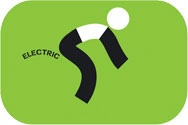Please read the following instructions carefully before starting to use your electric vehicle. The following are general usage instructions and apply to all electric vehicles of our company.
When using your electric vehicle on uphill roads, make sure that the maximum slope of the road does not exceed the maximum recommended by the manufacturer. The same applies to the upper recommended weight, to avoid overloading your vehicle. Using the vehicle on uphill roads with more than the recommended gradient or with more than the recommended weight may cause damage to the electric motor, frame, wheels, suspensions, brakes and other parts of the vehicle and, by extension, damage in this case they are not covered by the warranty.
After each use of the vehicle, regardless of the time or distance traveled, you should fully charge the battery. This will increase battery life. When your vehicle is not used for a period of time, you should charge the battery every ten (10) days. To charge the battery first connect the charger plug to the battery socket and then the charger plug to the socket of the 220Volt electrical power supply. Charging is complete when the charger stops working and the charger indicator light changes color from red to green. In case the charger continues to operate beyond the upper charging time given by the manufacturer, you should stop charging immediately and contact our company. Otherwise, damage to the battery and charger may occur and, by extension, damages in this case are not covered by the warranty. To disconnect the charger from the battery first remove the charger plug from the mains socket and then the charger plug from the battery socket. During charging, the battery should be checked at regular intervals and if you notice the battery overheating, about 35 to 40 degrees Celsius, you should stop charging immediately and contact our company.
Avoid using your electric vehicle in extreme weather conditions and especially in torrential downpours. Do not leave your electric vehicle exposed to the weather throughout the year, but store it under a shelter or cover it with a special waterproof cover. It is also very important to clean the vehicle with a slightly wet cloth or sponge and in no case not to use running water with the use of a rubber hose or pressure machine. By avoiding the above, you will reduce the possibility of moisture – water entering the various electrical components, such as electric motor, battery, speed controller – controller, etc., which can cause damage to these components and, by extension, damages in this case are not covered from the guarantee.
Check the tire pressure on a monthly basis. Low tire pressure wears out the tires, reduces the range of the vehicle and puts more strain on the electric motor. The manufacturer’s recommended maximum pressure is indicated on the outer side (profile) of each tire and is usually measured in PSI (Pounds per Square Inch).
Check the condition of the brakes, brake pads or brake zippers on a quarterly basis. If the vehicle is used on roads with long and steep slopes, check the brakes on a monthly basis. If you notice a metallic noise when using the brakes, you should check the brakes immediately.
On a monthly basis check the tightness of the various screws and nuts (screws, nuts, bolts) of the vehicle and especially the wheels and carry out the necessary tightenings, where required.
The indicated autonomy of the respective battery is valid with a driver – user of a vehicle weighing 75 kg, in open weather conditions, 25 degrees Celsius, without headwinds, on a dry smooth and level asphalted road, with a 0% ground slope, continuous movement, without interruptions, without stops and restarts and a constant speed of 20 km/h.
You can read in the Description section of each product on our website, more detailed instructions for use for each individual product.






